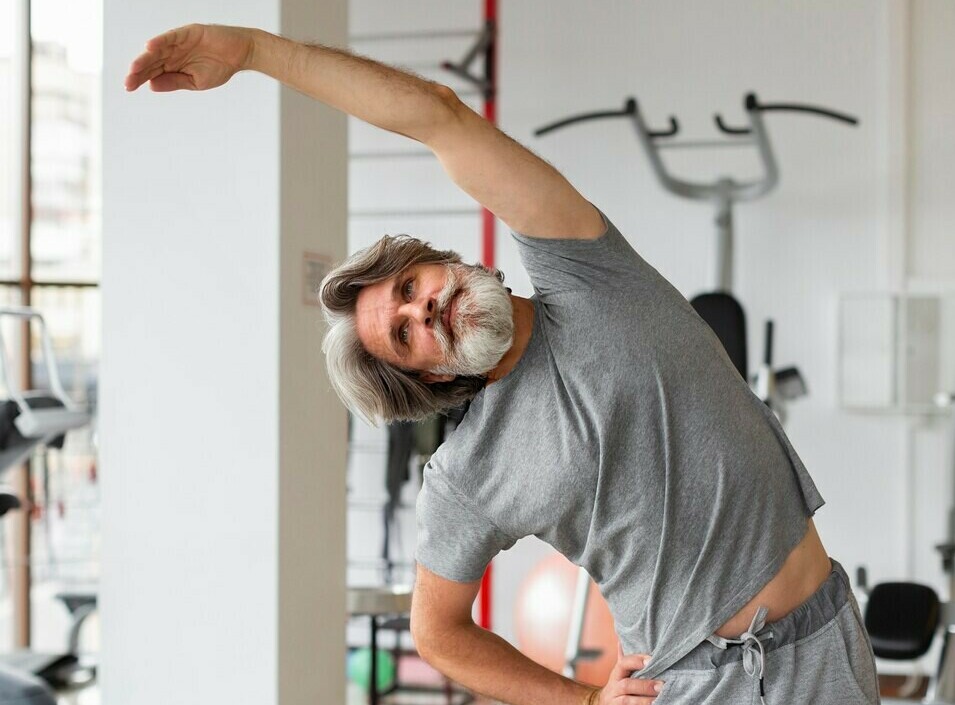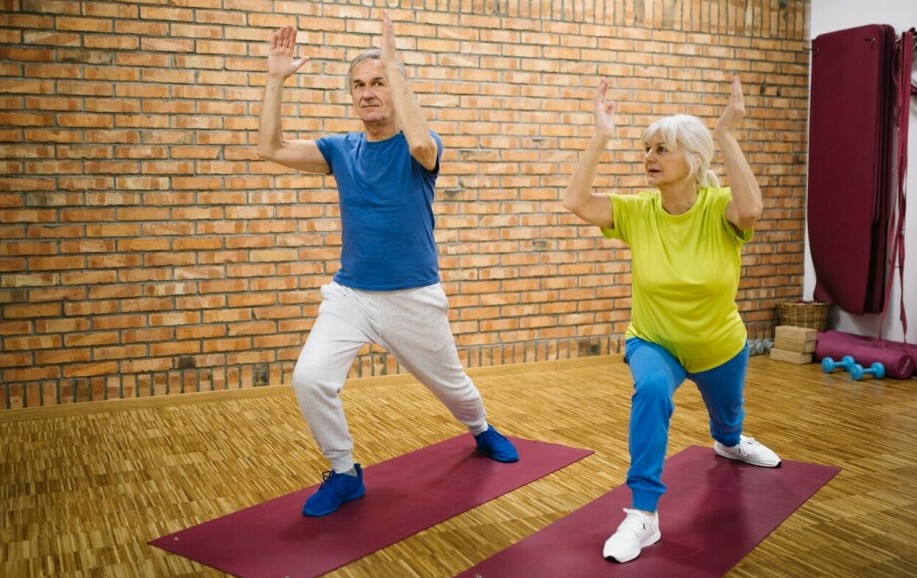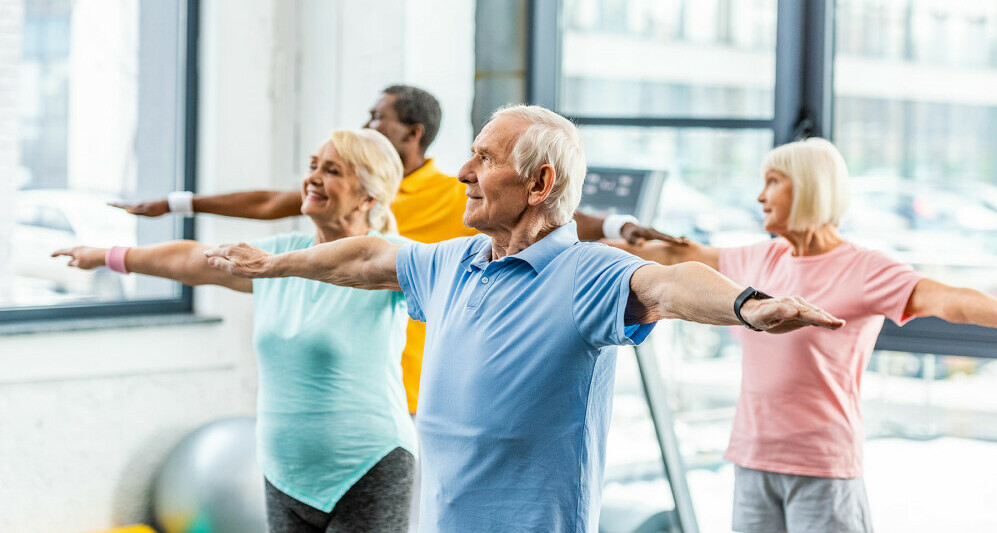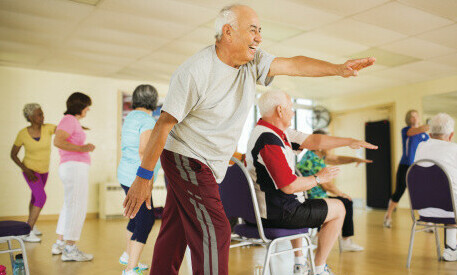Embracing the Golden Years: Importance of Flexibility and Mobility
Understanding the impact of aging on physical abilities
The theme of this post is on maintaining mobility and flexibility as you age. As individuals age, it is important to understand the impact that aging has on physical abilities. Aging can bring about a range of changes in the body, including decreased muscle mass, reduced bone density and a decline in flexibility and mobility. These changes can lead to a decrease in physical strength and endurance as well as an increased risk of falls and injuries.
Aging can also affect the body’s ability to recover from physical activity and injury as well as impact energy levels and metabolism. It is important for individuals to be aware of these changes and take proactive steps to maintain and improve their physical abilities as they age.
This can include engaging in regular exercise, maintaining a healthy diet and seeking out appropriate medical care and support. By understanding the impact of aging on physical abilities, individuals can take steps to mitigate these effects and maintain a high quality of life as they grow older.
The crucial role of maintaining mobility for independence and quality of life
Aging is a natural process that brings about a multitude of changes in the body including a decline in physical mobility. It is well-documented that maintaining mobility is crucial for older adults to retain their independence and quality of life. Mobility encompasses the ability to move freely and independently whether it be walking, climbing stairs or simply getting in and out of a chair.
As people age, they may experience a decrease in muscle strength, flexibility and balance, which can lead to difficulties in performing these basic movements. This decline in mobility can have significant impacts on an individual’s ability to carry out daily activities and participate in social and recreational activities, ultimately affecting their overall well-being.
It is therefore essential for older adults to prioritize activities and exercises that promote and maintain their mobility, such as strength training, stretching and balance exercises. Using assistive devices and making modifications to the home environment can also help older adults to remain mobile and independent. By prioritizing and maintaining mobility, older adults can continue to lead active and fulfilling lives, while reducing the risk of falls and maintaining their independence for as long as possible.

How flexibility contributes to minimizing the risk of injuries
Aging is a natural process that affects everyone, and with it comes the increased risk of injuries. However, maintaining flexibility can significantly minimize this risk. As we age, our muscles and tendons become less elastic making them more prone to strains and tears. By incorporating regular flexibility exercises into our daily routine we can help to counteract this natural loss of flexibility.
Stretching exercises such as yoga or Pilates can help to improve joint flexibility and range of motion, making it easier for our bodies to move and perform daily activities without causing strain or injury.
Maintaining flexibility can also help to improve balance and coordination which are crucial for preventing falls, a common cause of injury in older adults. By incorporating flexibility exercises into our regular fitness routine, we can help to maintain our physical health and minimize the risk of injuries as we age.
The benefits of staying mobile and flexible for mental health and social engagement
As we age, it becomes increasingly important to maintain our mobility and flexibility for our overall well-being including mental health and social engagement. Staying mobile and flexible allows us to continue participating in activities that we enjoy, such as walking, dancing or playing sports, which can have a positive impact on our mood and mental health.
Being able to move freely and comfortably can also enhance our social interactions and connections with others. Whether it’s being able to join in on a game of tennis with friends or simply being able to navigate a crowded social event with ease, staying mobile and flexible can help us feel more confident and engaged in our social lives.
Furthermore, research has shown that physical activity, including activities that promote mobility and flexibility, can also help to reduce the risk of cognitive decline and improve overall brain function as we age. Therefore, it is important to prioritize activities and exercises that promote mobility and flexibility as we age in order to maintain our mental and social well-being.

Customized Strategies for Enhancing Mobility and Flexibility
Assessment of personal mobility levels and setting realistic goals
As individuals age, it is important to assess their personal mobility levels in order to set realistic goals for maintaining or improving their physical capabilities. This assessment can include evaluating a person’s ability to walk, climb stairs and perform daily activities such as getting in and out of bed or a chair.
By understanding an individual’s current mobility level, healthcare professionals can work with them to establish achievable goals that will help maintain their independence and quality of life. This may involve creating a personalized exercise plan to improve strength and balance, as well as addressing any mobility limitations through assistive devices or modifications to their living environment.
By setting realistic goals, individuals can work towards maintaining their mobility and independence as they age, while also reducing the risk of falls and other mobility-related issues. It is important for individuals to regularly reassess their mobility levels and adjust their goals as needed to ensure they are continuing to make progress and maintain their overall well-being.
Differentiating between flexibility training and mobility exercises
Flexibility training focuses on improving the range of motion in our joints and muscles, often through stretching exercises. This can help to prevent injuries and improve overall physical function. On the other hand, mobility exercises are designed to improve our ability to move freely and easily, incorporating elements of strength, balance and coordination. While flexibility training can help to improve mobility, the two are not interchangeable.
It’s important to incorporate both types of exercises into our regular routine in order to maintain optimal physical function as we age. By understanding the differences between flexibility training and mobility exercises, we can create a well-rounded fitness plan that addresses the specific needs of our aging bodies.

Recommended daily exercises and stretches for seniors
As individuals age, it becomes increasingly important to maintain an active lifestyle in order to preserve strength, flexibility and overall health. For seniors, incorporating daily exercises and stretches into their routine can be immensely beneficial in promoting physical well-being and reducing the risk of injury.
Recommended exercises for seniors include gentle activities such as walking, swimming and cycling, which help improve cardiovascular health and strengthen muscles. Incorporating stretching exercises into a daily routine can help improve flexibility and range of motion, reducing the risk of falls and maintaining independence.
It is recommended that seniors aim for at least 150 minutes of moderate-intensity aerobic activity per week, along with muscle-strengthening activities on two or more days per week. Stretching exercises should be performed daily, focusing on major muscle groups such as the legs, arms and back.
It is important for seniors to consult with their healthcare providers before beginning any new exercise routine, in order to ensure that it is safe and appropriate for their individual needs. By incorporating these recommended exercises and stretches into their daily routine, seniors can maintain their physical health and independence as they age.
Incorporating mobility aids and devices as supportive measures
A decline in mobility and physical function can be due to a variety of factors such as arthritis, joint pain, muscle weakness or neurological conditions. In order to maintain independence and quality of life, many older adults turn to mobility aids and devices as supportive measures. These aids can range from simple items such as canes and walkers to more advanced devices like motorized scooters and wheelchairs.
By incorporating these aids into their daily lives, older adults are able to continue performing daily activities such as walking, shopping and socializing with friends and family. These devices can help reduce the risk of falls and injuries which are common concerns.
It is important for older adults to work with healthcare professionals to determine the most appropriate mobility aids for their specific needs and to receive proper training on how to use them safely and effectively. Incorporating mobility aids and devices can greatly improve the quality of life for aging individuals and allow them to remain active and engaged in their communities.
Overcoming Challenges and Staying Motivated
Addressing common barriers to regular physical activity in older adults
As individuals age, it becomes increasingly important for them to engage in regular physical activity in order to maintain their health and well-being. However, many older adults face common barriers that prevent them from participating in regular exercise. Some of these barriers include limited mobility, chronic health conditions, fear of injury, lack of social support and lack of access to suitable exercise facilities.
Addressing these barriers is important in order to encourage older adults to engage in regular physical activity. One way to address limited mobility is by providing exercise options that cater to individuals with mobility issues such as chair exercises or water aerobics. Providing education and resources on how to safely exercise with chronic health conditions can help alleviate fears of injury and encourage older adults to participate in physical activity.
Furthermore, creating opportunities for social support through group exercise classes or walking groups can help combat the feeling of isolation that some older adults may experience. Finally, ensuring that exercise facilities are accessible and welcoming to older adults can help remove the barrier of access to suitable exercise options. By addressing these common barriers, we can help promote regular physical activity in older adults.

Strategies for building a sustainable and enjoyable mobility routine
In addition to physical activity, it is important to focus on maintaining a healthy diet and weight, as excess weight can put added strain on the body and make mobility more difficult. Furthermore, staying mentally engaged and socially active can also contribute to maintaining mobility, as cognitive stimulation and social interaction have been shown to have positive effects on physical health.
Finally, it is important to address any specific mobility issues or concerns with a healthcare professional, as they can provide guidance and support for managing and improving mobility. By implementing these strategies, individuals can build a sustainable and enjoyable mobility routine that supports overall health and well-being as they age.
The role of community and family support in maintaining consistent practices
As individuals age, maintaining consistent mobility practices becomes increasingly important for overall health and well-being. Community and family support play a crucial role in helping older adults stay active and mobile.
Research has shown that social support from family and friends can significantly impact an older adult’s ability to engage in regular physical activity and maintain mobility. Whether it’s providing transportation to exercise classes, accompanying them on walks or simply offering encouragement and motivation, the support of loved ones can make a significant difference in an older adult’s ability to stay mobile.
Community programs and resources can also play a key role in promoting consistent mobility practices among older adults. From senior fitness classes to walking groups, these community-based initiatives can provide valuable opportunities for social interaction and physical activity, ultimately contributing to improved mobility and overall well-being.
By recognizing the importance of community and family support in maintaining consistent mobility practices, we can better support the aging population in staying active and independent as they grow older.

Celebrating milestones and recognizing the progress in mobility and flexibility
Aging is a natural process that affects everyone, and it is important to celebrate the milestones and recognize the progress in mobility and flexibility that come with it.
We have already alluded to various physical changes that unfold as we age, including a decrease in muscle mass, bone density and flexibility. However, it is essential to focus on the positive aspects of aging, such as the wisdom and experience that come with it, as well as the progress in maintaining mobility and flexibility.
Many older adults are able to maintain an active lifestyle through regular exercise, proper nutrition and taking care of their overall health. It is important to recognize the achievements and progress in maintaining mobility and flexibility, as it can significantly improve the quality of life for older adults. By celebrating these milestones, we can shift the focus from the negative aspects of aging to the positive achievements and improvements that come with it.
It is important to provide support and resources for older adults to help them maintain their mobility and flexibility as they age, such as access to exercise programs, physical therapy and assistive devices. Celebrating milestones and recognizing progress in mobility and flexibility can help older adults continue to lead fulfilling and active lives as they age.

I hope you have enjoyed this article on maintaining mobility and flexibility as you age. If you would like to contribute to the narrative I would encourage you to do so in the ‘Leave a Reply’ section below. Your questions and comments are most welcome! Finally, if you would like to become involved in the wellness community here at 65 and Fabulous please enter your name and best email in the form below. I look forward to working with you!

Grant Rayner
Muscle and joint pain? New from Changing the Future Outcome CTFO. 10xPure Gold with CBDa. Click on the image below to learn more…
